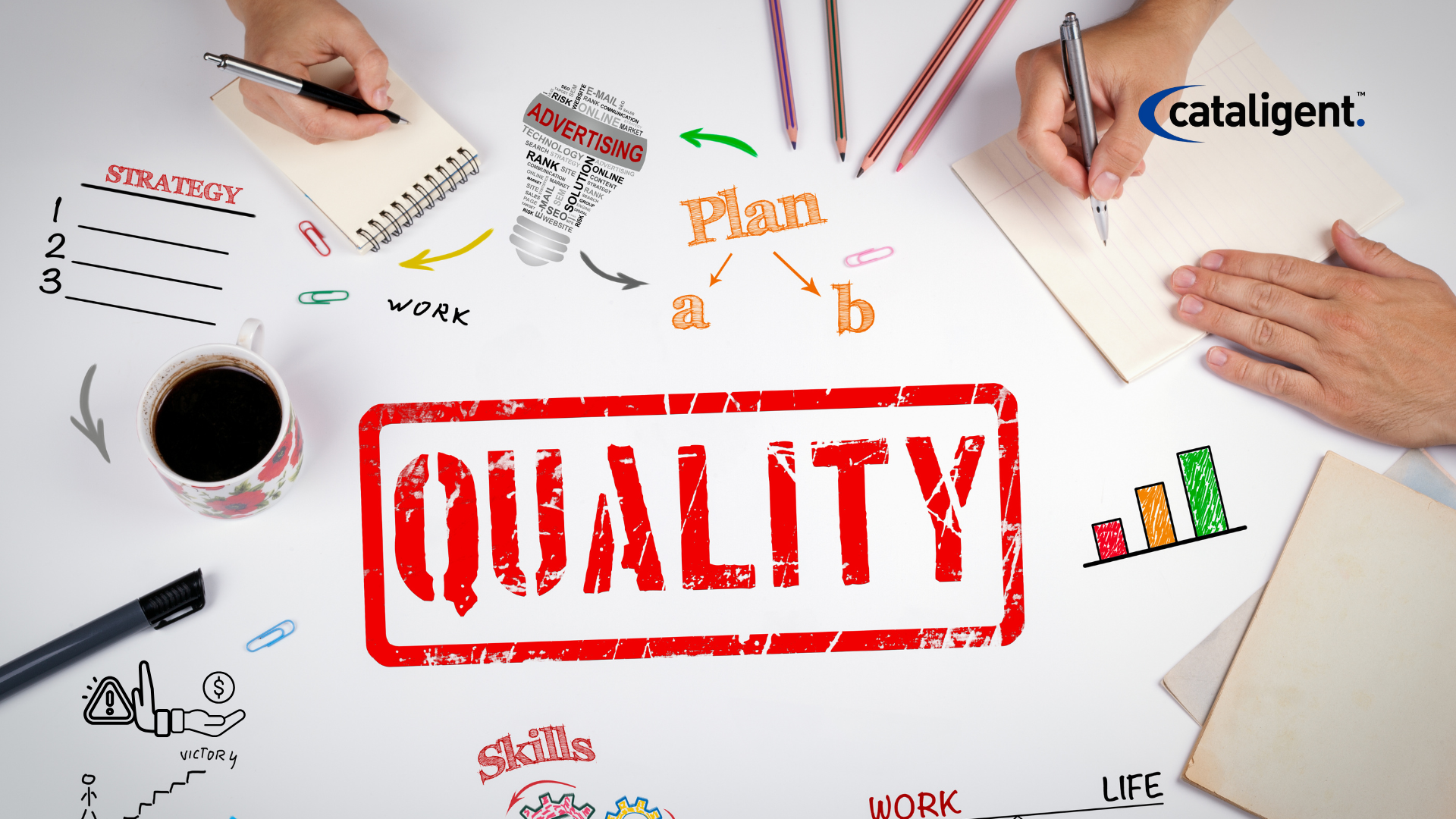What is Quality Management as Cost Saving?
Quality management as a cost-saving strategy involves systematically improving processes, products, and services to prevent defects, errors, and rework, which are significant sources of unnecessary costs. Instead of merely reacting to issues after they occur, organizations proactively embed quality into every stage of production, service delivery, or operational workflow. This strategy ensures resources are used efficiently, timelines are maintained, and overall operational costs are minimized.
Cataligent partners with organizations to integrate comprehensive quality management frameworks that link process excellence directly to financial efficiency. By doing so, organizations can prevent costly defects and operational inefficiencies while maintaining high performance and customer satisfaction.
Why Quality Management is Critical for Cost Saving
Investing in quality management as a cost-saving strategy brings numerous benefits that extend beyond mere defect reduction:
- Reduction of Rework Costs: Defects and errors often require additional labor, materials, and time to correct. By preventing defects upfront, organizations avoid repeated work and associated costs, significantly improving operational margins.
- Enhanced Operational Efficiency: Processes optimized for quality are inherently more efficient, reducing bottlenecks, delays, and operational waste.
- Customer Satisfaction and Loyalty: High-quality outcomes minimize complaints, returns, and warranty claims. Satisfied customers strengthen brand loyalty and reduce the cost of acquiring new clients.
- Regulatory Compliance and Risk Mitigation: Ensuring quality standards helps maintain compliance with industry regulations, avoiding penalties, fines, and reputational damage.
- Resource Optimization: Preventing defects ensures optimal utilization of personnel, technology, and financial resources, allowing organizations to allocate these assets toward value-adding activities.
- Sustainable Long-Term Savings: Unlike one-time cost-cutting measures, quality management embedded into processes creates a sustainable approach to reducing operational costs over time.
Neglecting quality management can lead to repeated errors, operational inefficiency, increased costs, dissatisfied customers, and a weakened competitive position.
How Quality Management Shapes Cost Saving Impact
Embedding quality management into operations directly influences both financial performance and operational excellence:
- Comprehensive Process Assessment:
Cataligent conducts in-depth evaluations of workflows, processes, and operational procedures to identify areas prone to errors, inefficiencies, and waste. This assessment forms the foundation for targeted quality improvement initiatives. - Preventive Quality Measures:
The implementation of preventive strategies—such as standard operating procedures, error-proofing systems, automation, and quality gates—reduces the likelihood of defects occurring. Cataligent ensures that preventive measures are tailored to organizational workflows and critical high-risk areas. - Monitoring and Quality Control:
Continuous tracking of key quality indicators through KPIs, audits, and real-time dashboards allows organizations to detect anomalies early, preventing minor issues from escalating into major cost drivers. - Root Cause Analysis and Corrective Actions:
Cataligent applies structured problem-solving approaches to identify the underlying causes of defects and implements corrective actions. This not only addresses immediate issues but also prevents recurrence, leading to long-term operational cost savings. - Employee Training and Awareness:
Personnel are trained in quality standards, process adherence, and error-prevention techniques. Cataligent ensures that employees understand the financial impact of defects and their role in maintaining high-quality outputs. - Continuous Improvement Culture:
Quality management is not static; it evolves through iterative refinements, feedback loops, and adoption of best practices. Cataligent embeds a culture of continuous improvement, ensuring processes remain efficient and cost-effective over time.
How Cataligent Can Help
Cataligent offers a comprehensive suite of services to integrate quality management with cost-saving initiatives:
- Process and Quality Audits: Identifies defect-prone areas and inefficiencies in workflows.
- Preventive and Corrective Measures: Implements robust mechanisms to prevent errors and address quality issues efficiently.
- Monitoring and Analytics: Leverages advanced tools and dashboards for real-time visibility into process performance and quality metrics.
- Training and Change Management: Ensures employees are equipped with the knowledge and skills to maintain high-quality standards consistently.
- Continuous Improvement Frameworks: Establishes ongoing refinement processes to sustain quality improvements and cost savings.
- Alignment with Cost-Saving Goals: Integrates quality initiatives directly with financial objectives to ensure measurable cost reductions.
Embedded Value for Organizations
- Significant Operational Cost Reduction: Minimizes costs associated with rework, defects, and corrective actions.
- Enhanced Efficiency and Productivity: Streamlined processes increase throughput and reduce waste.
- Higher Customer Satisfaction: Consistently delivering defect-free products and services enhances client trust and loyalty.
- Compliance and Risk Mitigation: Ensures adherence to industry standards and reduces regulatory risks.
- Sustainable Financial Benefits: Establishes long-term, repeatable mechanisms for cost savings.
- Capability Development: Builds internal expertise in quality management and operational excellence.
- Strategic Integration: Embeds quality and cost efficiency into the organization’s overall strategy and culture.
Quality management as a cost-saving strategy not only prevents defects and reduces rework but also optimizes resources, enhances customer satisfaction, and ensures sustainable operational efficiency. Cataligent helps organizations embed quality into every aspect of operations, translating process excellence into measurable cost savings and long-term business value.

